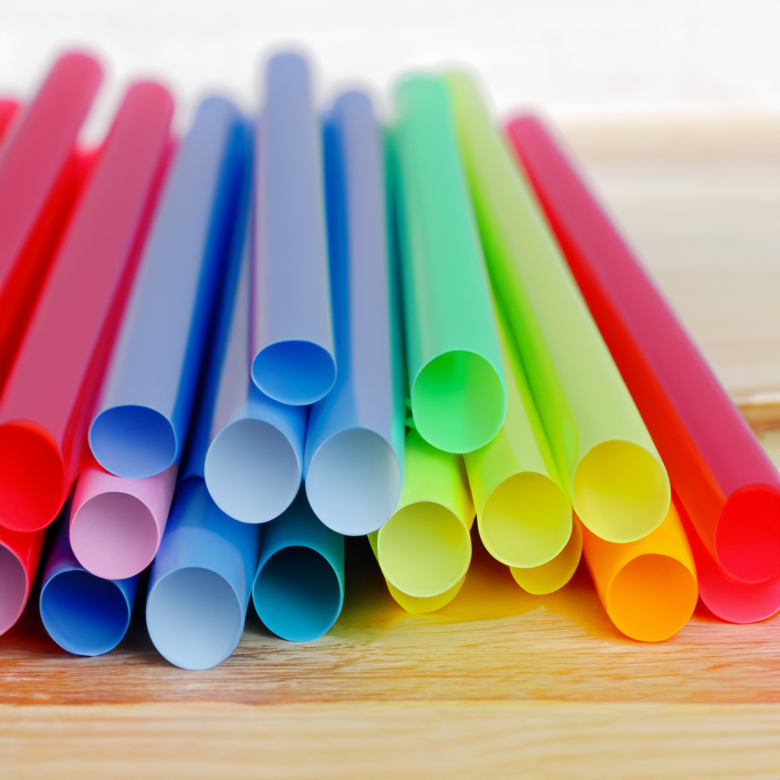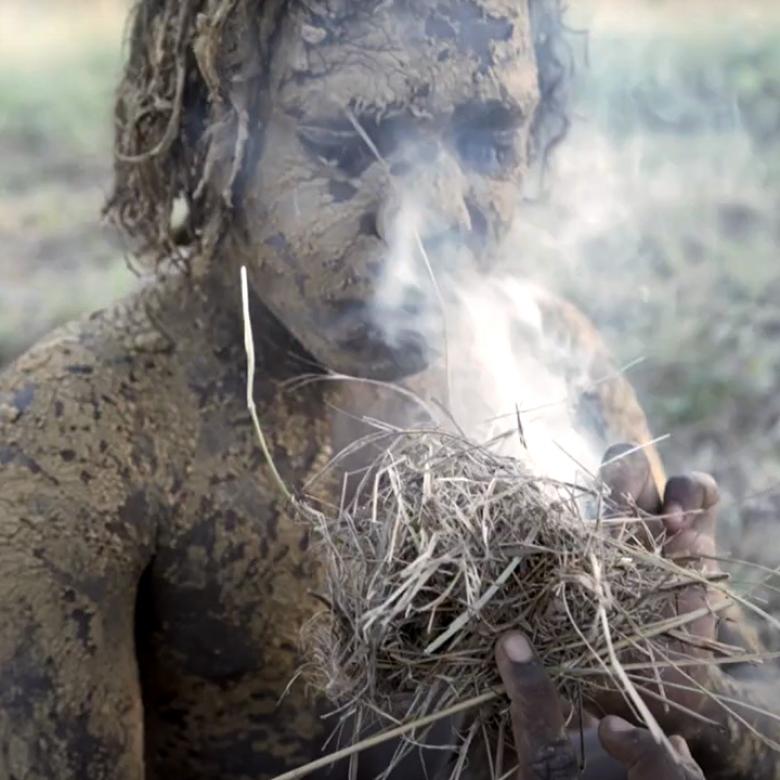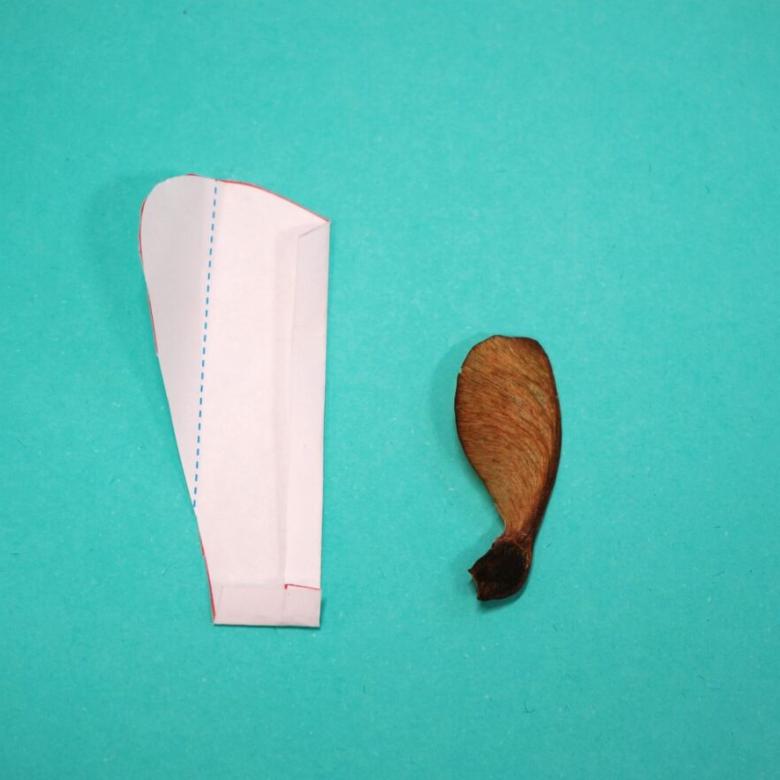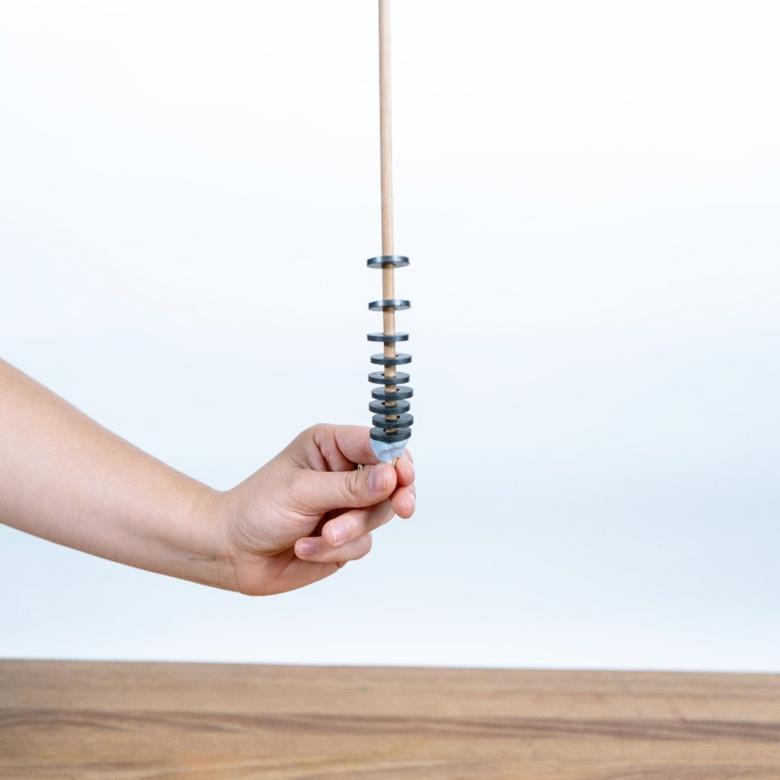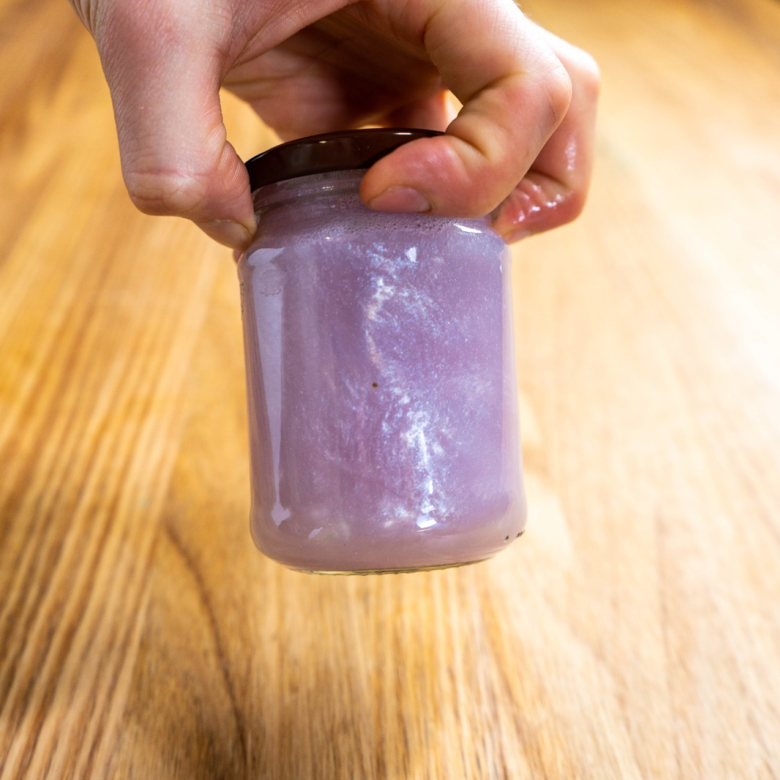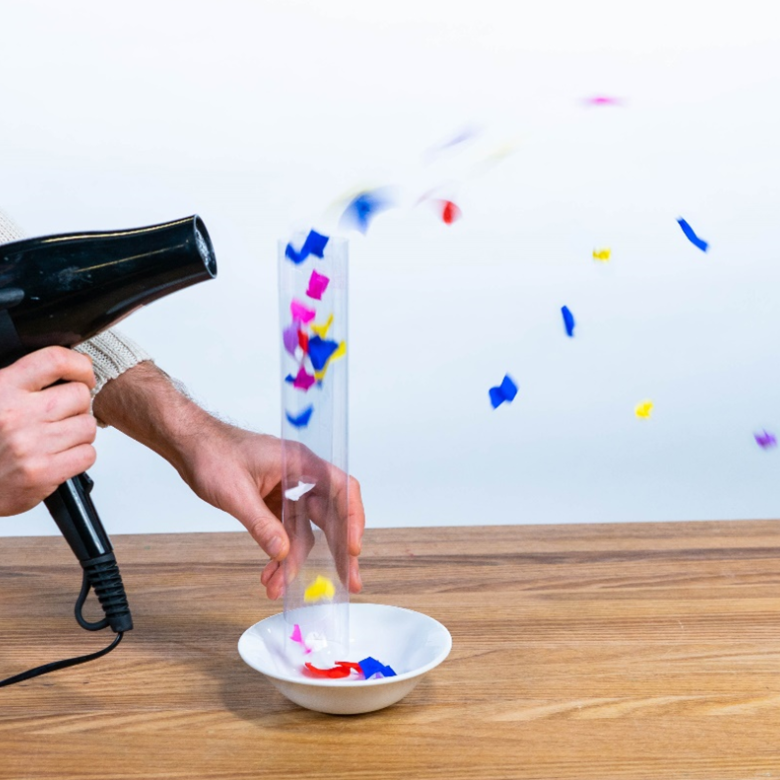You’ll need
- One or more plastic drinking straws
- Scissors
- A pin
- Sticky tape
- Paper
What to do
- Flatten one end of a straw. Use the scissors to cut the end of the straw into a pointy triangle shape.
- Put the straw into your mouth with the triangle just inside your mouth.
- Press your lips together just hard enough to hold the straw in place.
- Now blow through the straw!
- You may not get a sound straight away – playing the musical straw takes practice. Try adjusting the position of the straw in your mouth, how hard you blow and how hard you press your lips together.
- Once you can make a sound using the musical straw, cut small holes along one side of the straw using scissors or a pin to create a straw recorder. Cover different numbers of holes with your fingers to play different notes.
- While playing one long note on the straw, ask a friend to cut it shorter and shorter using scissors. Make sure they are careful, and don’t get close to your face. Listen to how the sound changes as the straw gets shorter.
- Tape a cone of paper to the end of your straw, like a trumpet. Try using small cones and large cones, and compare the difference in sound. Try making a giant cone out of newspaper!
Questions to ask
How hard is it to make a sound from your musical straw? What happens to the sound when you press your lips together harder? What happens when you blow harder through the straw?
Could you play different notes when you cut holes in your straw?
What happened to the sound when your friend cut the straw shorter? Did it get higher or lower?
What happened to the sound when you put the paper cone on your straw? Did it get louder or quieter? Was there a difference in sound if you used a small cone or a large cone?
What's happening
When you blow air through the straw, it makes the 2 plastic triangles of straw shake back and forth, or vibrate. Vibrating objects make sound – in this case, the sound of a musical straw.
When a bit of plastic straw moves, it pushes on the air. The air gets a bit squashed (compressed). We get a small region where the air pressure is higher than average. The squashed air then springs back, pushing on the next bit of air, and that pushes on the next bit of air, and so on. So our high-pressure region spreads out through the room.
When the straw springs back, it leaves a tiny space in the air, and air gets thinned out as it flows back into that space. That is, we get a tiny region of low-pressure air. This also spreads out through the room. So anyone in the room is hit by tiny changes in air pressure, up, down, up, down … You can’t feel them with your fingers, but your ears can detect these changes and we hear them as sound.
The air hardly moves – the sounds travels through the air.
If the straw vibrates slowly, the ups and downs of air pressure come more slowly. That is, the sound has low frequency. The ups and downs will also be further apart. That is, the sound wave has a longer wavelength. Such sounds are lower in pitch (deeper). If the straw vibrates faster, the ups and downs come more often. The sound has higher frequency and shorter wavelength. We hear a higher note.
When we make a sound on something like a straw, we make a complicated sound that has many frequencies in it. A shorter tube favours shorter wavelengths with higher frequencies. We hear a high sound. A long straw favours long, low-frequency vibrations, and we get a deeper sound.
Attaching a paper cone to the musical straw makes it louder – it amplifies the sound of the straw. This is because the paper cone increases the surface area that is vibrating. This larger surface area ‘pushes’ the vibrations out over a larger area, creating a louder sound.

